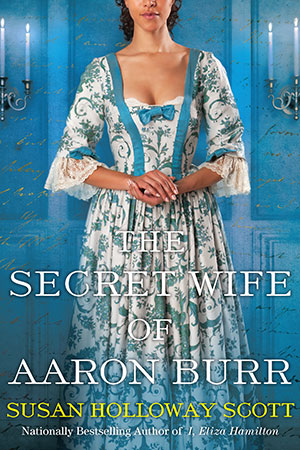Susan reporting,
Loretta and I have been friends forever, and between us we've written a LOT of books. Over the years, there's been much commiseration over characters that don't behave, or plots that are hopelessly knotted, or cover art that's just so not what we'd imagined. But we had a first with our two current books: we both wrote stories with duels. (See Loretta's post about dueling pistols
here, and a Friday Video about firing 19thc pistols
here.)
Since my book -
I, Eliza Hamilton - is a historical novel based on the life of the life of the wife of Alexander Hamilton, I don't think it's a spoiler to say that the duel in my story doesn't end happily for my protagonists. Early on the morning of July 11, 1804, Hamilton had himself rowed across the Hudson River to Weehawken, NJ for an "interview", the term for the arranged time for two gentlemen to meet for a duel, with Aaron Burr. (For the background to the duel and its aftermath, see
Affairs of Honor: National Politics in the New Republic by Joanne B. Freeman. Wonderfully detailed and readable, this is the same book that Lin-Manuel Miranda consulted while he was writing
Hamilton: An American Musical.)
Following the conventions of the day, their seconds watched as witnesses, while the attending physician and the boatmen turned their backs. There was disagreement as to what exactly happened when the two pistols fired. Most believe that Hamilton intentionally fired into the air, satisfying the demands of honor, but keeping to his beliefs as a Christian by not taking another man's life. Burr, however, fired towards Hamilton, severely wounding him.
Partially paralyzed, bleeding profusely, and drifting in and out of consciousness, Hamilton was taken back to Manhattan to the house of Nicholas Bayard,
upper right, where he died the following afternoon, surrounded by his grief-stricken family and friends. In addition to his widow Elizabeth Schuyler Hamilton, he left behind seven children, the youngest still an infant. Less than three years earlier, the Hamiltons' eldest son, Philip, aged 19, had also been killed in a duel defending his father's honor - possibly with the same pistols.
Even in an era long before social media, word of the duel spread swiftly, and by noon all of New York knew of it. The shock, outrage, and sorrow following Hamilton's death were immediate. he had been a popular man in the city he'd made his hometown, and the tragedy of his death plunged New York into deep mourning.
Burr, meanwhile, had fled to avoid being charge with murder. Although he had followed the rules of dueling, Burr was reviled for killing Hamilton, and while the murder charges were eventually dismissed, his life, fortunes, and reputation never recovered.
The entire country was stunned. How could the current vice president of the United States and the former Secretary of the Treasury - both respected gentlemen, lawyers, and veterans from the Revolutionary War - engage in a fatal duel for the sake of honor? The practice was deplored and defended, sermons thundered from pulpits, and the
sight of Eliza shrouded in mourning with her fatherless children touched everyone who glimpsed it. Over two hundred years later, the Hamilton-Burr duel remains the most famous/infamous duel in American history, and likely the only one most modern Americans can name.
Within a year of Hamilton's death, a marble monument in his honor had been placed at the site of the duel at Weekhawken,
left. Before long, souvenir-seekers had chipped away so many pieces of the marble that the monument was finally taken down around 1820, and later in the century the original dueling grounds were obliterated by railroad construction. Only the pitted marble plaque from the monument's base,
lower right, now remains in the New-York Historical Society. Today the duel is commemorated in Weekhawken with a small park at the top of the Palisades overlooking the original site. The park includes a bust statue of Hamilton, the stone where he was traditionally believed to have rested against after being wounded, and a stunning view of the Manhattan skyline. It's become such a popular site for visitors that it now has it has a
page on TripAdvisor.
The New-York Historical Society also owns exact replicas of the pistols used in the duel,
above. The original 18thc pistols were made by the noted gunsmith Robert Wogdon in London, and belonged to Hamilton's brother-in-law, John Barker Church. The original pistols still exist, and are now in the headquarters of J.P. Morgan & Chase Company. This modern bank is the descendant of The Manhattan Company, founded by Burr in 1799 as a water service company - which quickly evolved into a bank to rival the Bank of New York, founded earlier by Hamilton.
Have I seen the original pistols? No; I haven't the heart (but you, who are of sterner stuff, can see a photo of them
here). Seeing the replicas and realizing exactly how large the ball must have been to fit those barrels - and imagining the damage such a ball would cause - was enough for me.
And yes, when I wrote the scene with the aftermath of that duel through Eliza Hamilton's eyes, I cried.
Top: Hamilton-Burr Dueling Pistols, replica set, 1976, New-York Historical Society. Photo ©2017 Susan Holloway Scott.
Upper right: Bayard House (Where Hamilton Died), 1892, New York Public Library.
Middle left: The Monument to Alexander Hamilton by Pavel Petrovich Svinin, c1811-1813, Metropolitan Museum of Art. (black and white reproduction)
Lower right: Location Where Alexander Hamilton was wounded, maker unknown, 1805, New-York Historical Society. Photo ©2017 Susan Holloway Scott






































 One of us --
One of us -- 


